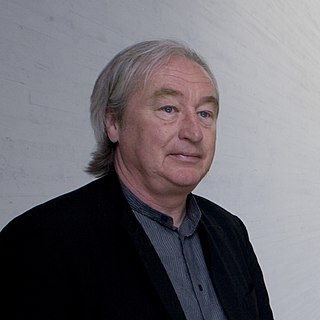
The American Institute of Architects (AIA) is a professional organization for architects in the United States. Its headquarters are located in Washington, D.C. The AIA offers education, government advocacy, community redevelopment, and public outreach programs, and collaborates with other stakeholders in the design and construction industries. The current leadership of the AIA includes Lakisha Ann Woods, CAE, serving as EVP/Chief Executive Officer, and Emily Grandstaff-Rice, FAIA, serving as the 2023 AIA President.

The Royal Institute of British Architects (RIBA) is a professional body for architects primarily in the United Kingdom, but also internationally, founded for the advancement of architecture under its royal charter granted in 1837, three supplemental charters and a new charter granted in 1971.

Sigma Xi, The Scientific Research Honor Society (ΣΞ) is a non-profit honor society for scientists and engineers. Sigma Xi was founded at Cornell University by a junior faculty member and a small group of graduate students in 1886 and is one of the oldest and most prestigious honor societies. Membership in Sigma Xi is by invitation only, where members nominate others on the basis of their research achievements or potential. Sigma Xi goals aim to honor excellence in scientific investigation and encourage cooperation among researchers in all fields of science and engineering. Many of the world's most influential scientists have been members of Sigma Xi, such as Albert Einstein, Linus Pauling, Barbara McClintock, and Sally Ride.

The Acoustical Society of America (ASA) is an international scientific society founded in 1929 dedicated to generating, disseminating and promoting the knowledge of acoustics and its practical applications. The Society is primarily a voluntary organization of about 7500 members and attracts the interest, commitment, and service of many professionals.

Steven Holl is a New York–based American architect and watercolorist.

Boston Architectural College is a private college in Boston. It is New England's largest private college of spatial design. The college's main building is at 320 Newbury Street in Boston's Back Bay neighborhood.

The Digital Classicist is a community of those interested in the application of digital humanities to the field of classics and to ancient world studies more generally. The project claims the twin aims of bringing together scholars and students with an interest in computing and the ancient world, and disseminating advice and experience to the classics discipline at large. The Digital Classicist was founded in 2005 as a collaborative project based at King's College London and the University of Kentucky, with editors and advisors from the classics discipline at large.
Peter Morgan Pennoyer FAIA is an American architect and the principal of Peter Pennoyer Architects, an architecture firm based in New York City. Pennoyer, his four partners and his fifty associates have an international practice in traditional and classical architecture, or New Classical Architecture. Many of the firm's institutional and commercial projects involve historic buildings, and the Institute of Classical Architecture & Art has stated that the firm's strength is in "deftly fusing history and creative invention into timeless contemporary designs."
The Cal Poly Pomona College of Environmental Design is a college part of the California State Polytechnic University, Pomona. The college houses over 1,600 students; making it one of largest environmental design programs in the United States. The college offers bachelor's degrees in five departments, as well as three master's degree programs. It is the only academic unit within the California State University system to be associated with a Pritzker Prize laureate.

The Center for Architecture and Design is a 501(c)(3) non-profit organization located in Philadelphia, Pennsylvania. The Center produces educational programs related to the topics of architecture, urban planning, and design, including talks, workshops, festivals, design competitions, and exhibitions. Their venue at 1218 Arch Street serves as a public forum as well as a home for the offices of the Center, for AIA Philadelphia, and for the Community Design Collaborative. The organization was founded in 2002 by the Philadelphia chapter of the American Institute of Architects (AIA).

One of the oldest and largest chapters of the AIA, the Boston Society of Architects (BSA) is a nonprofit membership organization committed to architecture, design and the built environment.
The Construction Management Association of America (CMAA) is a non-profit and non-governmental, professional association serving the construction management industry. The Association was formed in 1982. Current membership is more than 14,000, including individual CM/PM practitioners, corporate members, and construction owners in both public and private sectors, along with academic and associate members. CMAA has 29 regional chapters.
Richard Sammons is an architect, architectural theorist, visiting professor, and chief designer of Fairfax & Sammons Architects with offices in New York City, New York and Palm Beach, Florida. The firm has an international practice specializing in classical and traditional architecture, interior design and urban planning. Sammons was instrumental in the reemergence of classical design as a major movement in America through his designs as well as his work as an instructor at the Prince of Wales Institute in Britain in 1992-3 and as a founding member of the Institute of Classical Architecture in 1991. From 1996 to 2004, the Fairfax & Sammons office also served as the headquarters for the noted American architecture critic Henry Hope Reed Jr. (1915) and Classical America, the organization he founded in 1968. In 2013, Fairfax & Sammons received the Arthur Ross Award for Lifetime Achievement in Architecture, an award created to recognize and celebrate excellence in the classical tradition.

D. Jeffrey Mims is a painter, educator, lecturer, and muralist working as a classical realist.

New Classical architecture, New Classicism or Contemporary Classical architecture is a contemporary movement in architecture that continues the practice of Classical architecture. It is sometimes considered the modern continuation of Neoclassical architecture, even though other styles might be cited as well, such as Gothic, Baroque, Renaissance or even non-Western styles – often referenced and recreated from a postmodern perspective as opposed to being strict revival styles.
Moule & Polyzoides, Architects and Urbanists is an architecture and urban planning firm based out of Pasadena, CA founded in 1990 by partners Elizabeth Moule & Stefanos Polyzoides.

G. P. Schafer Architect is a New York City-based architectural firm established in 2002 and led by founder and principal Gil Schafer III. Its work has been featured in Architectural Digest, Town & Country, Veranda and The New York Times, and in books on classical and residential architecture, restoration and interior design.
Michael Lykoudis is an architect, urban designer and consultant, known for his work as dean of the University of Notre Dame School of Architecture and a co-founder of the Driehaus Prize at the University of Notre Dame. He is a member of the College of Fellows of the American Institute of Architects.
During the middle of the 20th century, various women’s auxiliary groups were formed to support local and state chapters of the American Institute of Architects (AIA). The names of these groups were usually a variation of Women’s Architectural League (WAL) or Women’s Architectural Auxiliary (WAA) depending on the location of the chapter. WAL groups were active from 1941 through the early 1980s. Membership usually included the wives of AIA architect members and sometimes women architects. The groups were most often involved in public education, architectural scholarship fundraising, political lobbying, assisting with the hosting of national or state AIA conventions held in their home city, and hosting social events for women associated with the field of architecture.
Daniela Holt Voith is an American architect. She is the Founding Partner and Director of Design at Philadelphia-based architecture studio Voith & Mactavish Architects, LLP and is Fellow of the American Institute of Architects (FAIA). She has worked extensively providing planning and design services with schools and universities including the University of Pennsylvania Carey Law School, Yale University, and boarding schools such as Millbrook School, The Lawrenceville School, and St. Andrew’s School, where the film Dead Poets Society was shot. The firm's major projects also include preserving, rehabilitating, and additions to National Historic Landmarks such as the Mercer Museum, Bryn Mawr Film Institute, Old Library at Bryn Mawr College, and the former Centennial National Bank, now the alumni center for Drexel University. She is married to economist Richard Patrick Voith, Chairman of Econsultsolutions Inc., who is a fellow at the University of Pennsylvania's Institute of Urban Research and adjunct faculty at Wharton. As of 2019, she is the President of the Philadelphia Chapter of the Institute for Classical Architecture and Art. She sits on the board of the Design Leadership Foundation and is a director of the Carpenter’s Company of Philadelphia.











